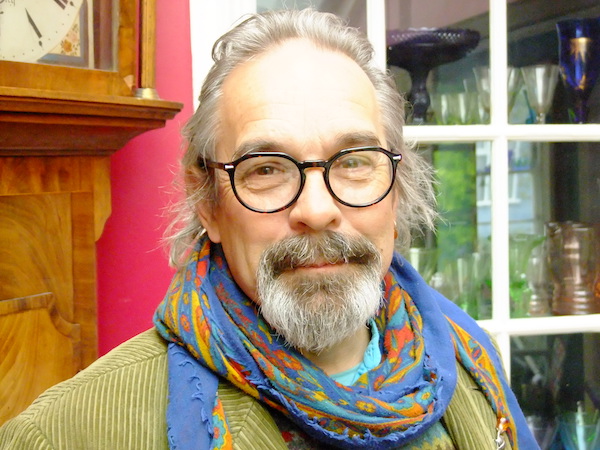Oct 28, 2025 10:47 AM
In Memoriam: Jack DeJohnette, 1942–2025
Jack DeJohnette, a bold and resourceful drummer and NEA Jazz Master who forged a unique vocabulary on the kit over his…

To mark the 50th anniversary of the Apollo moon landing, Roger Eno (shown here), his brother Brian Eno and Daniel Lanois revisit and expand upon their 1983 soundtrack, Apollo: Atmosphere and Soundtracks.
(Photo: Cecily Eno)It’s one thing to commemorate an important anniversary. It’s another to revisit the past and make something new from that original footprint.
Fifty years since the July 20, 1969, Apollo 11 moon landing, the latter is exactly what composer Brian Eno, pianist Roger Eno and guitarist/producer Daniel Lanois did with their collaborative album, Apollo: Atmospheres And Soundtracks, a record which served as the sonic backbone to the 1983 Apollo 11 documentary, For All Mankind.
Set for release July 19, Apollo: Atmosphere and Soundtracks—Extended Edition was an ideal stage for musical perspective and personal reflection for all three artists, as the two-disc project marked the trio’s first time working together in more than 30 years. This latest edition of the album finds the original 12 tracks remastered and supplemented by an additional 11 cuts, all newly devised for the occasion.
For Roger Eno, the 1983 release served as his first-ever recording opportunity. And in a recent conversation he explained how the original sessions went, as well as ambient music’s place in contemporary culture.
The following has been edit for length and clarity.
What was it like for you working with Brian and Daniel again after each developing your own identities as artists?
We worked completely differently from how we did in ’83, because we worked at a distance [this time]. Danny and I sent MIDI files to Brian: Dan sent them from his studio in Los Angeles and I sent them from my studio here in Suffolk, U.K.
Essentially, we wrote three pieces each that Brian treated, and that became the second Apollo album. So, we didn’t see each other and weren’t in the same room as each other during the process, which is completely different from the original. [Back then], we were locked in together for weeks. It made things very easy to work. The drawback, of course, is that I like those two very much. You know, we get on as friends, so that aspect was missing for me. In the original Apollo recording, what you hear is a great record. But what you don’t hear or see is the enormous fun we had making it. I mean really belly-laughingly great fun. So, that kind of aspect I missed slightly, yeah.
The other thing is that, technology has changed so much that it seemed kind of proper to do it this way, because we couldn’t have done it that way in the ’80s; there was no internet. So, why not use the technology that’s now quite common?

Jack DeJohnette boasted a musical resume that was as long as it was fearsome.
Oct 28, 2025 10:47 AM
Jack DeJohnette, a bold and resourceful drummer and NEA Jazz Master who forged a unique vocabulary on the kit over his…

Always a sharp dresser, Farnsworth wears a pocket square given to him by trumpeter Art Farmer. “You need to look good if you want to hang around me,” Farmer told him.
Sep 23, 2025 11:12 AM
When he was 12 years old, the hard-swinging veteran drummer Joe Farnsworth had a fateful encounter with his idol Max…

D’Angelo achieved commercial and critical success experimenting with a fusion of jazz, funk, soul, R&B and hip-hop.
Oct 14, 2025 1:47 PM
D’Angelo, a Grammy-winning R&B and neo-soul singer, guitarist and pianist who exerted a profound influence on 21st…

Kandace Springs channeled Shirley Horn’s deliberate phrasing and sublime self-accompaniment during her set at this year’s Pittsburgh International Jazz Festival.
Sep 30, 2025 12:28 PM
Janis Burley, the Pittsburgh International Jazz Festival’s founder and artistic director, did not, as might be…

Jim McNeely’s singular body of work had a profound and lasting influence on many of today’s top jazz composers in the U.S. and in Europe.
Oct 7, 2025 3:40 PM
Pianist Jim McNeely, one of the most distinguished large ensemble jazz composers of his generation, died Sept. 26 at…